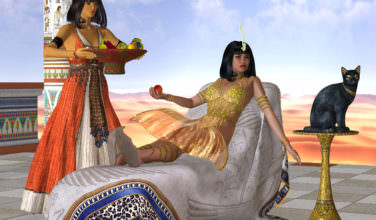All About Pan in Greek Mythology
Comments Off on All About Pan in Greek Mythology
 The Greek mythological god Pan, was a half human, half goat god that lived in nature. He was rustic god, commonly worshiped in Arcadia. He was often associated with forests, fields, and pastures. And although Pan may not be included in the Olympic Pantheon, Pan has a very prominent role in many ancient Greek myths. Here’s more information about Pan and the various stories associated with him:
The Greek mythological god Pan, was a half human, half goat god that lived in nature. He was rustic god, commonly worshiped in Arcadia. He was often associated with forests, fields, and pastures. And although Pan may not be included in the Olympic Pantheon, Pan has a very prominent role in many ancient Greek myths. Here’s more information about Pan and the various stories associated with him:
Where Pan Came From
Although there are differing opinions about Pan’s origins, many scholars believe Pan was the son of Hermes and Penelope. The story goes that while Penelope’s husband, Odysseus, spent 10 years traveling back home from the Trojan War, Penelope slept with 108 suitors. One of these suitors was Hermes, which resulted in Pan’s birth. Over time, he became associated with nature, forests, and fields and he became the god of these things. He was also linked to the springtime, which was a very fertile time. Through his association with fertility, Pan also has many stories about his attempts to seduce nymphs.
Pan Seduces a Wood Myth
At one point, Pan tried to seduce the wood nymph Syrinx. But Syrinx rejected his gestures, and ran as far from him as she could. He chased her all the way through the mountains, until Syrinx found her sisters. To protect her from Pan’s advances, Syrinx’s sisters turned her into a reed. When Pan arrived to continue pursuing her, the wind blowing through the reeds created a beautiful melody. Pan loved this sound, and the idea that it was being made by the woman he was in love with. He decided to make an instrument out of Syrinx, to capture both her beauty, and the beautiful melody of the reeds. But Pan could not tell which reed was Syrinx, so he cut some random reeds, and fashioned the Pan flute. The Pan flute has been a staple of Pan’s character ever since.
Pan Attempts to Seduce Echo
There are also stories of Pan’s attempts to seduce Echo. Echo was a nymph with great talents for singing and dancing. But she always rejected the advances of suitors. This angered Pan, so he ordered his followers to find Echo, and tear her body to pieces. These pieces were spread all over the earth. And although her body was gone, Echo’s voice could still be heard, repeating the last words of anyone she heard.
There is a success story for Pan. At one point Pan tried to seduce Selene, the goddess of the moon. Pan cloaked himself in sheepskin, to hide his goat features. He then beckoned Selene down from the moon. Once Selene was in the forest, Pan successfully seduced her.
Traditions of Worship for Pan
Arcadia, the center of Pan’s worship, was isolated from the rest of ancient Greek culture. As a result, the traditions involved in worshiping Pan were different. While most gods were worshiped in temples, Pan was usually worshiped in grottoes or caves. There is one such grotto on the northern slope of the Acropolis of Athens, dedicated to Pan worship. Despite the common use of caves for worship, there are some temples of Pan. There is a temple of Pan in southwestern Peloponnese, on the Neda River gorge. The ruins of this temple still stand to this day.
Although Pan wasn’t one of the main Olympian gods, he did have an important part in Greek mythology because of his association with nature and fertility.
Categorized in: Greek Mythology
This post was written by Greek Boston





